Interior spaces act as extensions of a place by preserving the design and layout of a building. To help characterise the core and make it unforgettable, here are 5 key contemporary architectural elements to explore:
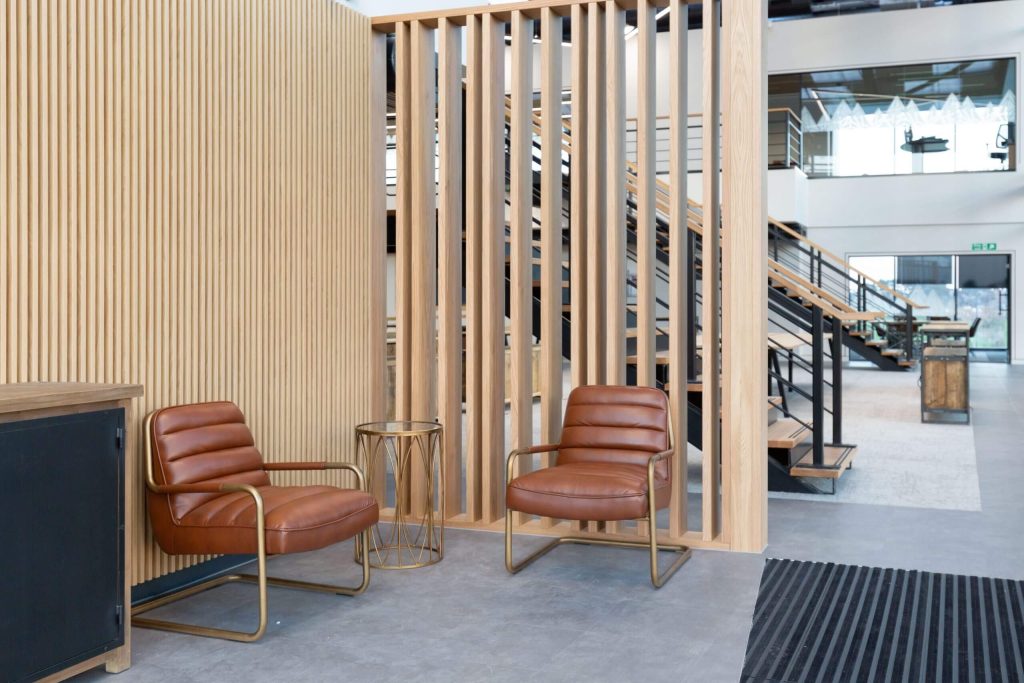
Use space intentionally by encouraging wayfinding for complex built environments with screens and zoning partitions. Screens are perfect for their:
• Versatility
• Expressiveness
• Functionality
• Subtle definition of zones
• Softening of other utilitarian elements
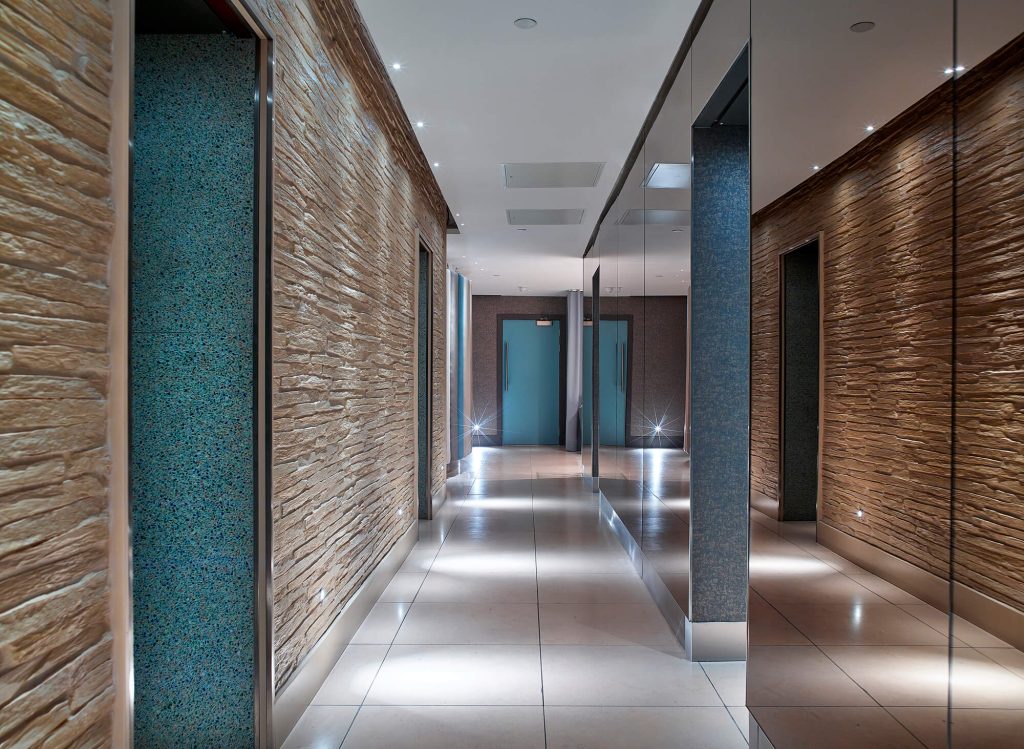
To elevate the success of a space, designers often turn to use nuances and variations of texture. There are a few reasons behind this:
• There is the transaction of sensations an occupant feels through surfaces having a tactile definition.
• Quick to install Texture Panel Systems are easy to use when working with tight deadlines and need rapid transformation.
• It helps change the way a room is interpreted and experienced.
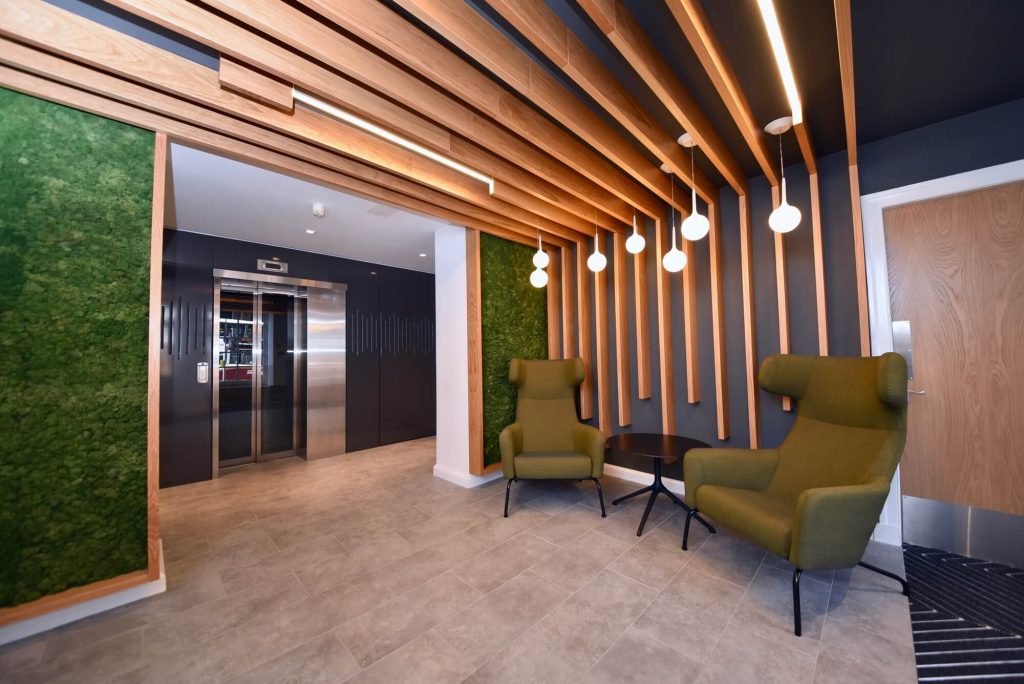
In contemporary spaces, bold angles and geometric shapes are often used. These striking but simple lines work superbly in busy atriums or leisure zones where footfall is high. Whether you’re looking to create new angles in a traditionally square space or using the geometry of the building as a guide, lines and shapes build interest and intrigue.
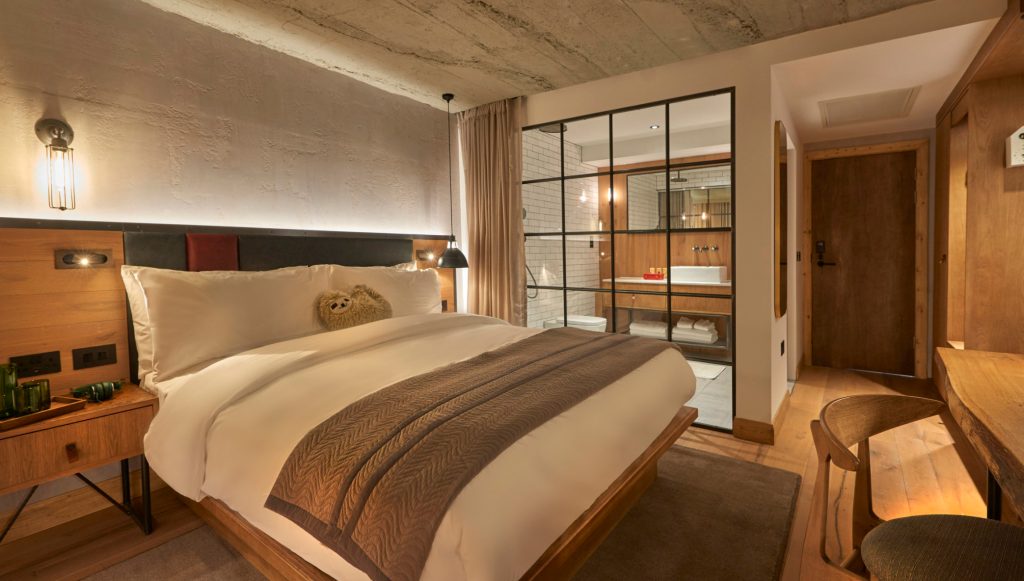
With a renewed interest in Brutalist architecture, designers need a quick and easy solution to create this raw and austere style. It is also often complemented by including natural elements like wood and timber effect wall panels to soften it with a natural touch. This helps to add interest to a space with a unique juxtaposition of materials.
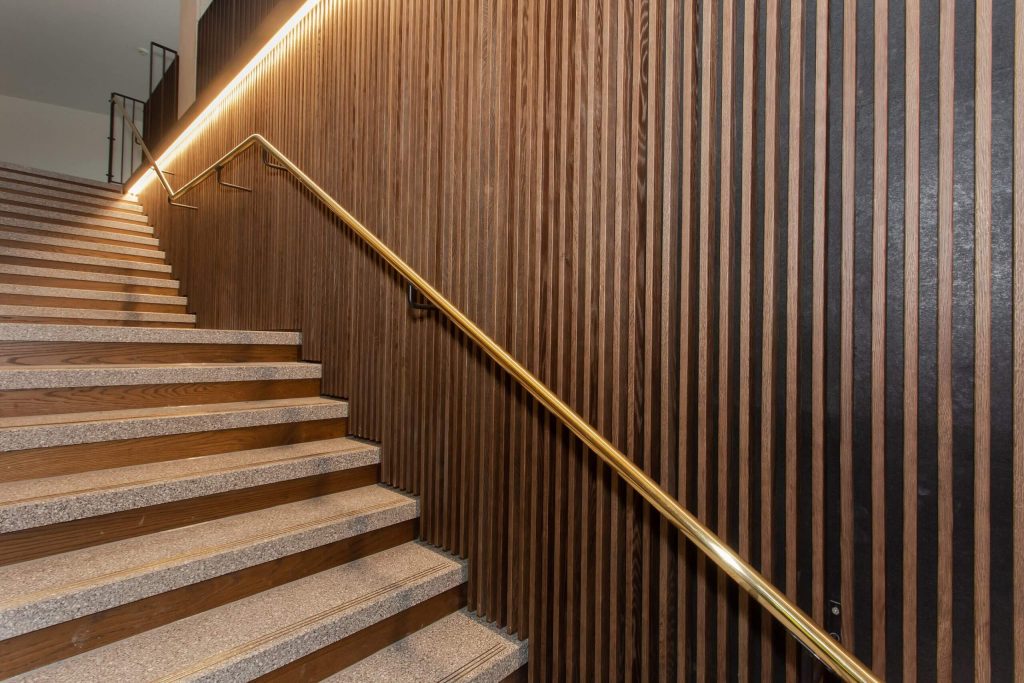
Spaces need to be purposeful. Staircases are strong foundational architectural elements that often act as heroes of an interior, standing proudly as a winning combination of form and function. They can also be sculptural and impressive as they help transform the feeling of a space, changing perceptions as occupiers move from one level to another. We offer solutions and ideas to help designers with stairwell entrance spaces.